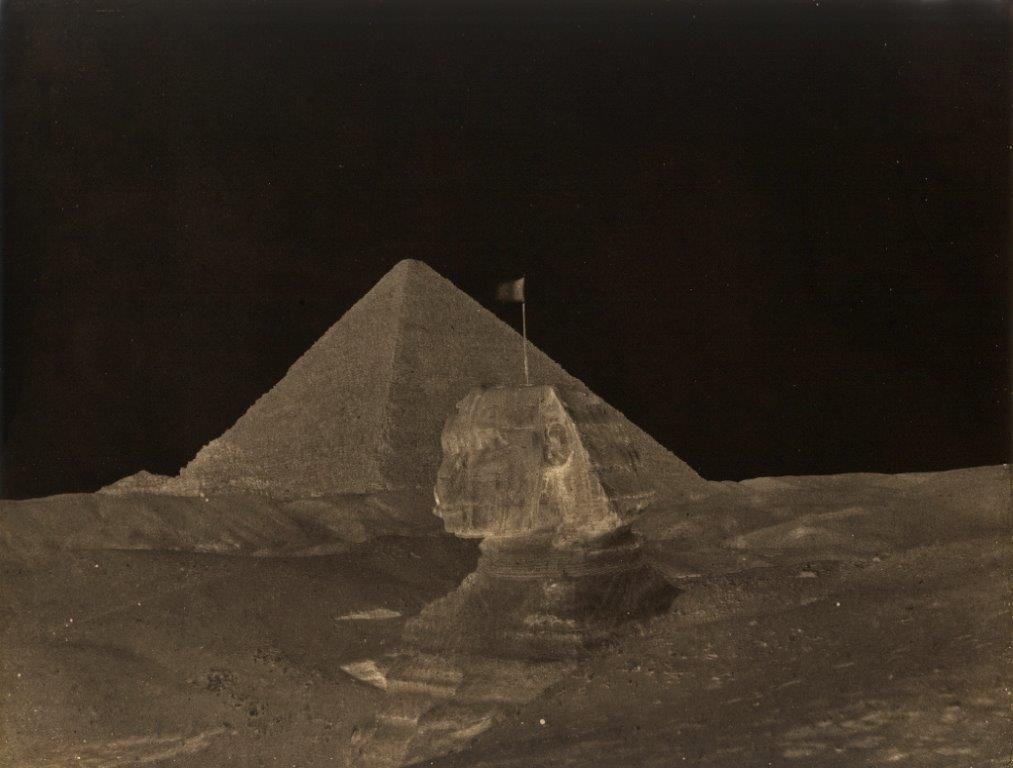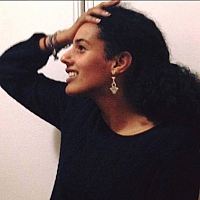
©JONH BEASLEY GREENE, Sphinx and Pyramid, Giza, 1853-1854, waxed paper negative with applied pigment, 24.4 x 31.3 cm
Expositions du 28/9/2016 au 2/12/2016 Terminé
Hans P. Kraus Jr. Fine Photographs 962 Park Avenue 10028 New York France
Hans P. Kraus Jr. Fine Photographs's press releaseHans P. Kraus Jr. Fine Photographs 962 Park Avenue 10028 New York France
NEW YORK – The enigmatic 19th-century photographs of John Beasley Greene (1832-1856) will be on view from September 28 – December 2, 2016 at Hans P. Kraus Jr. Fine Photographs. An American born in France, Greene made surprisingly modern images of Paris, Egypt, and Algeria during the middle of the 19th century in only four years, before his early death at age 24.
The exhibition features a rare group of more than 25 waxed paper negatives and salt prints exhibited for the first time. A fully illustrated catalogue with an essay by author and historian Eugenia Parry will accompany the exhibition.
The first museum exhibition of Greene’s photography is scheduled to open at the San Francisco Museum of Modern Art in 2018. Greene’s work is in the collections of the Metropolitan Museum of Art and the Museum of Modern Art in New York City, the J. Paul Getty Museum in Los Angeles, the Bibliothèque nationale de France and the Musée d’Orsay in Paris, among many other national and international institutions.
Many of the works in the exhibition at Hans P. Kraus Jr. Fine Photographs are waxed paper negatives, which were appreciated as valuable objects in their own right in the 19th century. The photographs on view, which date from 1852 through 1856, cover the entire span of Greene’s career.
Born in 1832 in Le Havre, France, to American parents, Greene was a student of the noted photographer Gustave Le Gray in Paris, who, as Parry writes, was “a magician of change who inspired and shaped the genius of John Beasley Greene.” Greene’s unusual still lives made on a rooftop in Paris, probably during his studies with Le Gray, show the beginnings of his enchanted eye.

©JOHN BEASLEY GREENE, Venus de Milo on rooftop in Paris, 1852-1853 or earlier, Waxed paper negative, 31.2 x 24.3 cm
In 1853, the 21-year old Greene made the first of two voyages to Egypt as a photographer and archaeologist. At that time, he documented Egyptologist Auguste Mariette’s excavations around the Great Sphinx of Giza. But he may have been drawn to the monuments and landscape as much as the dry desert air. As Parry notes, “France was killing him. Not the culture. The climate. The ocean fog in Le Havre and the Paris rains added further torment to his congenitally infected lungs…Perhaps he began to think of Egypt as a kind of safe-house where he would have to live in order to live at all.”
Mid-19th century mania for life on the Nile may have also drawn Greene to Egypt, but once there he took in the endless expanse of sky and the wonder of the newly decipherable hieroglyphics and created majestic views. Among his photographs are images of Cleopatra’s Needle, the obelisk now situated in New York’s Central Park, and Pompey’s Pillar, a landmark to this day in Alexandria.
From 1855-1856, Greene made his last series in Constantine, an ancient city dramatically perched on a mountaintop in Algeria. Quoting Parry: “in the light of North Africa, he doesn’t exactly represent places, even when he records houses, ruined aqueducts, roads, bridges or burial sites...This late work is about feeling. At Constantine, dwellings on a stone mountain seem to be outcroppings of the rocks themselves. Encroaching shadows on disgorgements of stone near a Christian tomb fill the frame. It’s suffocating, even monstrous at times...Young Greene was close to dying. He wanted his pictures to look like how he felt.”
JOHN BEASLEY GREENE will be on view at Hans P. Kraus Jr. Fine Photographs from September 28 – December 2, 2016 at 962 Park Avenue at 82nd Street in New York City.

©JOHN BEASLEY GREENE Cleopatra's Needle, Alexandria, 1853-1854, Waxed paper negative, 30.2 x 24.6 cm


